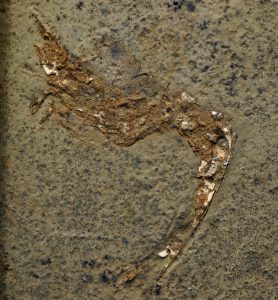
The sea floor was a dangerous place for particularly smaller animals. Over the last century, a wealth of information about traces in ancient prey items has been recorded, showing successful and unsuccessful predation. One of the best ways to largely avoid predators and other disturbances is to find a shelter. Research published earlier this month by Russell Bicknell and co-authors including The University of Alabama Museums’ Curator of Paleontology Adiel Klompmaker reports on a remarkable example of a 15 cm long inoceramid clam from the mid-Cretaceous (early late Albian) of Australia. Hidden within this shell are three swimming shrimps. Apparently, these animals lived within another one, which also known as inquilinism. The Australian example is the first evidence of inquilinism between extinct shrimps and bivalves. Another specimen shows at least 30 fishes in an inoceramid clam.
Interested in reading more about this research? The scientific article can be downloaded freely until November 19, 2021, visit ScienceDirect’s website.
Bicknell, R.D., Smith, P.M., Holland, T., and Klompmaker, A.A., 2021. Cretaceous clam chowder: The first evidence of inquilinism between extinct shrimps and bivalves. Palaeogeography, Palaeoclimatology, Palaeoecology 584, 110669. https://doi.org/10.1016/j.palaeo.2021.110669